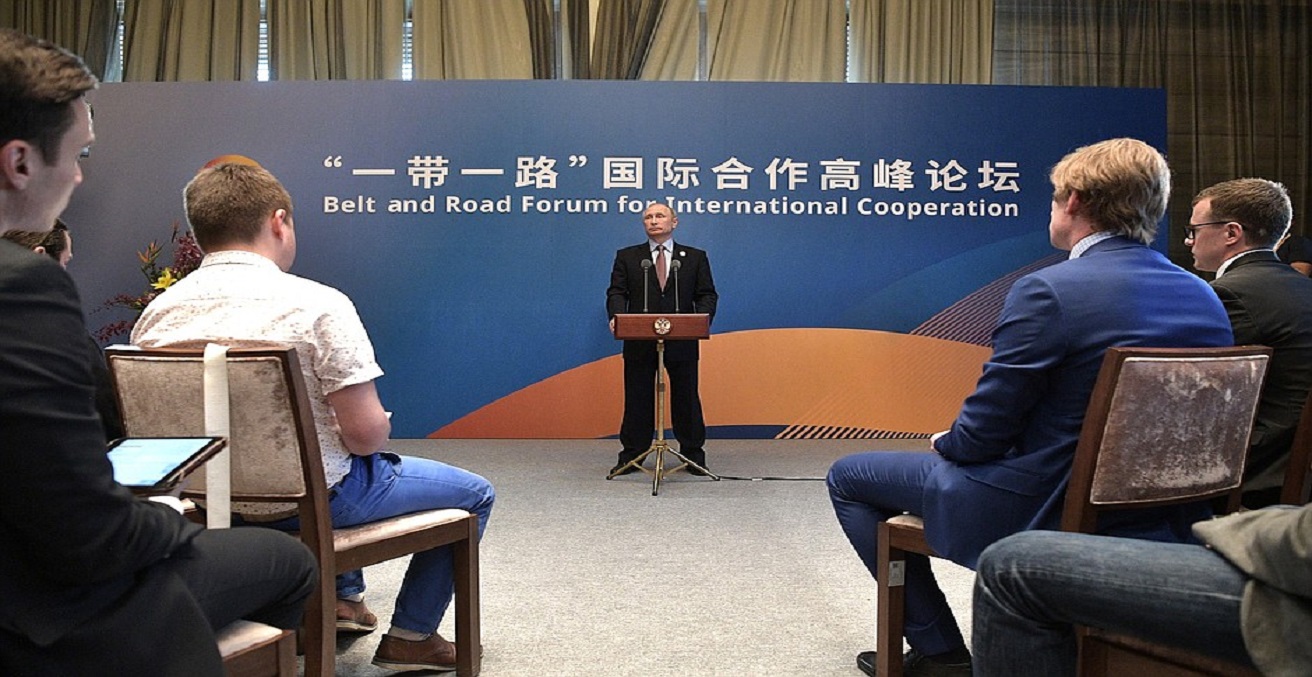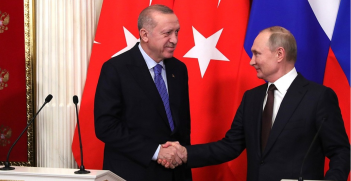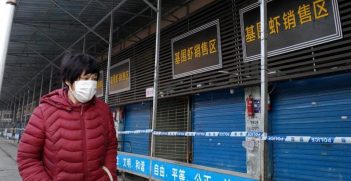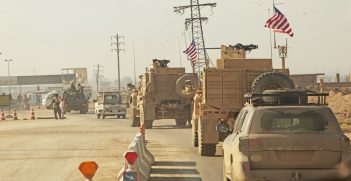Russia, Turkey and the Belt and Road Initiative in Central Asia

As China moves deeper into Central Asia with its Belt and Road Initiative, Russia and Turkey must consider their own roles in the region.
The traditional dynamic of Russia and Turkey has been one of adversity. It has been a series of interminable wars over mastering the Pontic steppe, then the Black Sea, the Balkans and the straits. Religious, cultural and spatial arrangements were prone to generate conflict between the two regional powers. Both imagined a wide Eurasian destiny for themselves, engulfing the Balkans, the Middle East and, not last, Central Asia. While World War I might have led to the collapse of their imperial structures, it did not obliterate their geopolitical inclinations or strategic necessities. It just put them on halt.
Russia (when Soviet) and Turkey (when Kemalist) gradually regained their status on the world scene, allowing them to silently compete for influence in the common neighbourhood. Under Turgut Özal, at the end of the 1980s, Turkey advanced a more assertive foreign policy, complemented by its own version of strategic soft power, pan-Turkism, which was meant to appeal the Caspian and Central Asian communities on the basis of cultural and ethnic ties. After the fall of the Soviet Union and the advent of independent Turkic republics, the Eurasian chessboard was once again ripe for a great game.
Pushing the trade and investment card in Azerbaijan, Kazakhstan, Uzbekistan and Turkmenistan, Ankara managed to gain a foothold, precarious as it might have been, in Russia’s strategic hinterland. Without many mercantile instruments available in that period, the Kremlin grudgingly admitted the new status quo, but maintained a close eye on the security relations in the region. And it drew its red line there; not to be passed.
As soon as it recovered its economic impetus under President Vladimir Putin, gaining access to additional funds to be used in Central Asia, Russia was back in the game. And it started a carrot-and-stick offensive, following Turkey’s disillusionment with Turanic fraternity and poor (political) returns on its investments. In less than a decade, Moscow was back in pole position.
The rearrangement of power structures in the region ended in a loose stalemate. Turkey and Russia allowed each other to maintain influence in their shared area of interest, while boosting their reciprocal bilateral ties. It was not really a Yalta-style partition of Central Asia, but it tended to be a silent, and deferential, acknowledgment of each other’s legitimate ‘presence’ in the area.
But they were no longer alone…
China’s Central Asian quest
Central Asia was no longer an isolated playground for postmodern re-enactments of 19th century great games. The present era no longer presented a mere binary choice. Other actors got involved. They were richer and more efficient in economic statecraft. The European Union’s economic might, the United States’ (limited) hard-power projections, China’s charm-and-money offensive reached Central Asia and transformed not only its internal dynamics, but also the manner in which it integrates into the larger global network. With the advent of such actors, a Turkish-Russian condominium was mere wishful thinking.
The rise of China had been more than problematic for both. It soon gained the economic upper hand throughout the region. The gas and oil flows were curbed towards the East. And Central Asian states no longer depended on Russian infrastructure for distribution. Direct pipelines to Kazakhstan and Turkmenistan emerged and refineries in Tajikistan and Kyrgyzstan were built (or are in the process of becoming operational). Chinese consumer goods also conquered the Central Asian markets, gradually pushing Turkey out of the game, as had previously happened to Ankara’s presence in the construction sector.
All the more challenging in the long term for these two actors is the Belt and Road Initiative out of Beijing. Apparently a business-only project, the BRI is bound to alter the entire dynamic of Central Asia and the Middle East, transforming the polities along the road and offering them new mercantile possibilities. Facing such a grand vision with so much capital behind it, Turkey and Russia fear to be left aside or to be made irrelevant in the geoeconomic calculations of local actors. They may be confined to a security or cultural relationship, but, otherwise, lose their traditional influence within the region.
As always, power comes with great costs, and only China has the available funds to project it on a grand scale in Central Asia. Of course, it also faces consistent threats of the security and political type, but its steady flows of cash can soften asperities along the way. Moreover, its no-strings-attached stance is not perceived as a challenge by local strongmen searching to maintain their grasp on power. In this sense—as it was recently shown during the tensions between Afghanistan and Pakistan—China can put forward its own regional leadership and successfully convince quasi-belligerent parties to back down on the rhetoric of conflict.
Without any doubt, the Belt and Road vision shall prompt a definitive displacement of hegemons in the area. During its implementation, all the state (and non-state) actors along the route shall need to readjust their allegiances. Not only Turkey and Russia shall find it difficult to maintain their influence unscathed, but also other powers such as Iran or the European Union, while the United States shall be restricted almost completely from any access within Central Asia, except for its modest foothold in Afghanistan.
It takes three (or more) to tango
However, the Belt and Road Initiative (BRI) also presents Russia and Turkey with new opportunities. Unlike the European Union—whose companies operate under much stricter regulations which do not allow home states to offer them full support—Ankara and Moscow can extensively take part through state-owned or party-affiliated companies, in the large development projects, supplementing the insufficient Chinese input. In other words, there is a possibility to increase influence in the area by using Chinese funds.
And that is the reason why neither Russia nor Turkey can really afford to stand outside the BRI or oppose it. Undermining such a project politically would do little to stop Beijing’s mercantile march towards the West. It would only result in antagonising the world’s second economy and in sending the Central Asian states the wrong type of message.
Therefore, the best place for Russia and Turkey is within BRI. They have the chance to be China’s partner inside the loose boundaries of this project, while benefiting from all its financial opportunities. Just like it happened in the case of the Shanghai Cooperation Organisation—where Russia felt itself steadily sidelined by Beijing’s impetus—a proper way forward might be to attract other regional powers within BRI and work together with them in its framework.
For this reason, Russia might wish Turkey to be a very active player in Central Asia, opening up some closed doors for it. In such an endeavour, they might also co-opt Iran, which has steady relations with Russia and decent ones with Turkey, in their ‘friendly’ balancing act. The purpose of having more regional powers as active players (and not mere passive recipients of Chinese capital) in the BRI, is not to impede the project, but rather to gain some (collective) leverage and bargaining power when it comes to the allocation of resources. Not to be entirely left at the whim of Beijing’s generosity.
In the end, both Russia and Turkey have to accommodate China’s implacable rise in Central Asia and the Middle East. They cannot truly oppose it or block it. What they can do, however, is to make sure that such a build up does not result in an exclusive hegemony, but into one that allows the distribution of power within the region. And for this purpose, the open-ended nature of the Belt and Road Initiative is a good fit.
With the Belt and Road Initiative China does not lie low any longer, as Deng Xiaoping once recommended. It sees its advent as a benevolent power in win-win terms, assured that it gets the upper hand. Nonetheless, the first step upon this new Silk Road passes through Central Asia and it needs all the help it can get in securing the area. And Russia, Turkey (perhaps even Iran) are the only partners at hand. There is no other route to Europe.
On its long march westwards, China cannot travel alone.
Horia Ciurtin is a legal adviser in the field of international investment law and international arbitration.
This article was first published by DAVA Strategic Analysis on 16 August 2017. It is republished with permission.





